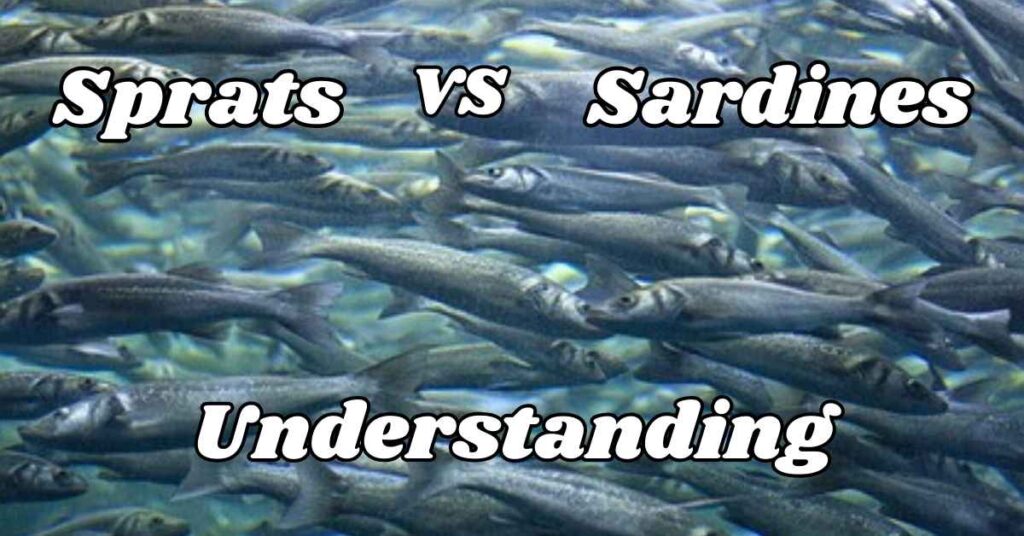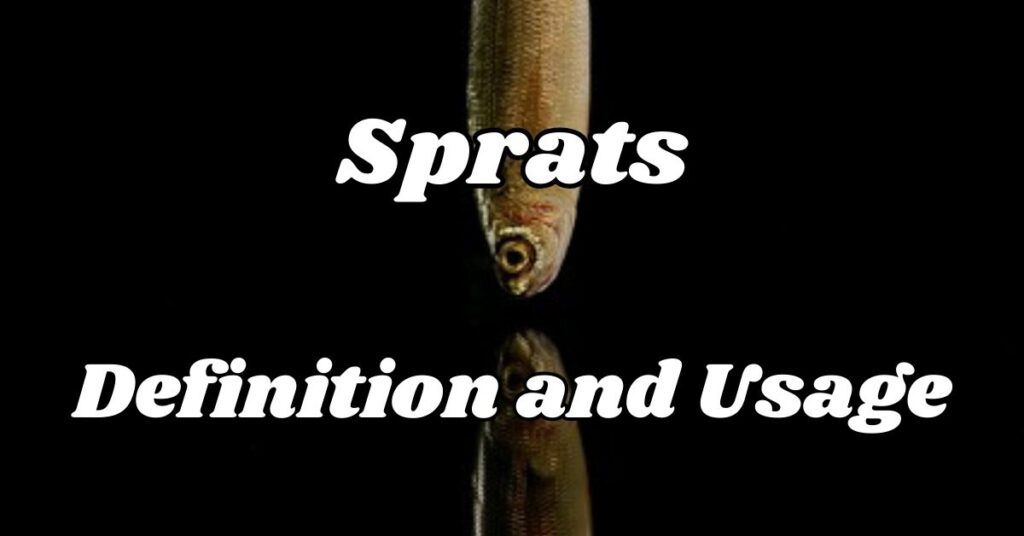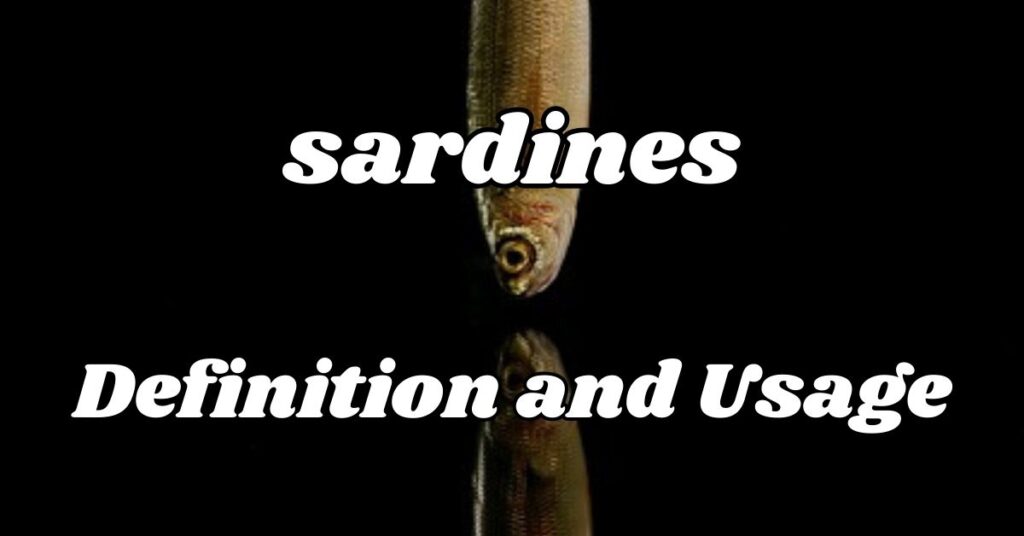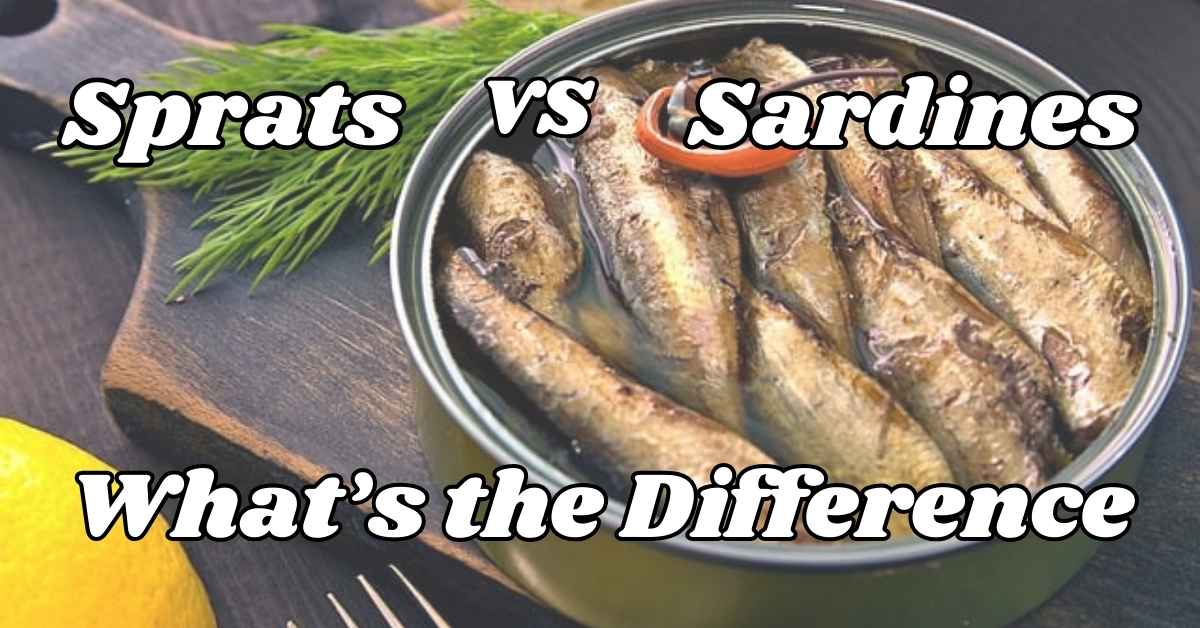Sprats vs Sardines is a topic that often confuses seafood lovers. Both types of fish belong to the Clupeidae family, but they differ significantly in size, taste, and culinary uses. Sprats are typically smaller, measuring around 4 to 8 inches, and have a stronger flavor.
In contrast, sardines are larger, usually ranging from 6 to 12 inches, with a milder taste that makes them versatile in various dishes.
This article will explore the differences between these two fish, helping you understand their unique qualities and nutritional benefits while guiding you in making informed choices for your meals
Understanding Sprats vs Sardines

Let’s define these two fish. Sprats are smaller fish typically found in the North Atlantic and the Baltic Sea. They belong to the sprat family and are known for their strong flavor.
On the other hand, sardines refer to several species within the sardine family, including the well-known Sardina pilchardus. Sardines are generally larger and have a milder taste compared to sprats. This article will delve into their origins, definitions, uses, and more.
Origins of the Word Sprats
The word “sprat” originates from the Old English term sprott, which was commonly used during the Middle English period. It is a variant of the word sprot, and is related to the German word Sprott and the Dutch sprot.
Additionally, it connects to the Old English verb spryttan, meaning “to sprout.” The term was first recorded in English in the 15th century and refers to small, oily fish belonging to the genus Sprattus. These active fish are known for swimming in large schools and are often smoked or canned, similar to sardines.
Origins of the Word Sardines
“Sardine” has a rich etymology that traces back to Ancient Greek, specifically the word sardínē or sardĩnos. It entered the English language in the 15th century, derived from the Latin sardina, which itself likely comes from the island of Sardinia, where these fish were abundant.
This connection to Sardinia highlights the geographical significance of the fish. The earliest known use of “sardine” with its modern meaning appears in a cookbook from the 1430s.
Interestingly, the phrase “packed like sardines,” referring to how tightly sardines are packed in cans, first emerged in 1911, showcasing the fish’s cultural impact over time.
Sprats: Definition and Usage

Sprats are small fish from the sprat family, primarily represented by the species Sprattus sprattus. Generally measuring about 4 to 8 inches in length, these fish are known for their robust flavor and distinctive, silvery appearance.
Often found in European waters, sprats are commonly enjoyed smoked, canned, or fried. Their strong taste makes them a popular ingredient in various dishes, especially in Scandinavian cuisine, where they are frequently served on open-faced sandwiches.
Sprats Definition
Sprats are small fish belonging to the genus Sprattus, primarily the European sprat (Sprattus sprattus). They typically measure around 4 to 8 inches in length and have a robust body shape with a distinctive dorsal fin that sets them apart from other fish species.
Sprats Usage
Sprats are often used in various dishes across Europe. They can be smoked, canned, or fried and are popular in Scandinavian countries where they are often served on open-faced sandwiches or as part of traditional meals. Their strong flavor makes them a favorite for those who enjoy bold tastes.
Synonyms of Sprats
To enhance your understanding of sprats, here are ten synonyms that may be used interchangeably:
- Herring
- Young herring
- Small fish
- European sprat
- Sprat fish
- Brisling
- Fish bait
- Fish roe
- Anchovy (in some contexts)
- Sardine (in casual usage)
Sardines: Definition and Usage

Sardines are small, oily fish belonging to the sardine family, particularly the species Sardina pilchardus. Typically measuring between 6 to 12 inches in length, sardines have a distinctive silver skin and a mild flavor.
They are versatile in the kitchen, often enjoyed canned, grilled, or added to salads. Their rich nutritional profile makes them a popular choice for health-conscious eaters, providing essential omega 3 fatty acids and protein.
Sardines Definition
Sardines, particularly Sardina pilchardus, are larger than sprats and typically range from 6 to 12 inches in length. They have a more elongated body shape and are known for their silver skin and rich flavor profile.
Sardines Usage
Sardines find their way into many dishes worldwide. From Mediterranean salads to classic canned sardines on toast, they offer versatility in cooking. Their milder taste allows them to be paired with a variety of ingredients without overpowering other flavors.
Synonyms of Sardines
Here are synonyms for sardines that illustrate their diversity:
- Pilchard
- Sardina
- Brisling sardine
- Pacific sardine
- Atlantic sardine
- Fish fillet
- Canned fish
- Sea fish
- Marine fish
- Small herring
Side by Side Comparison
When comparing sprats or sardines, several factors come into play:
| Feature | Sprats | Sardines |
| Size | Smaller (4-8 inches) | Larger (6-12 inches) |
| Taste | Stronger flavor | Milder flavor |
| Nutritional Value | Lower protein | Higher protein |
| Common Uses | Snacks, spreads | Main dishes, salads |
This table highlights key differences between sprats and sardines regarding size, taste, nutritional value, and common culinary applications.
Read More Article: Recieve or Receive: How To Spell It Correctly
Everyday Usage Examples

Sprats and sardines are popular choices in many everyday dishes. For sprats, a common example is a traditional Scandinavian open faced sandwich, where they are layered on buttered bread with pickled vegetables.
Sardines, on the other hand, often feature in Mediterranean cuisine, such as in pasta dishes. They can be grilled or added to salads, making them versatile ingredients that enhance flavors while providing valuable nutrients for a healthy diet.
Sprats Example
Sprats are commonly used in a traditional Scandinavian dish known as “smörgås.” This dish features open-faced sandwiches made with buttered bread, topped with pickled vegetables and sprats.
The combination of flavors and textures makes smörgås a popular choice, showcasing the robust taste of sprats while providing a satisfying and nutritious meal.
Read also: Tweek vs Tweak: What’s the Difference?
Sardines Example
Sardines frequently feature in Mediterranean cuisine, particularly in the classic dish “pasta con le sarde.” This flavorful recipe combines pasta with sautéed sardines, fennel, raisins, and pine nuts.
The blend of savory and sweet ingredients creates a delightful harmony of flavors, making this dish a beloved staple that highlights the versatility and richness of sardines in cooking.
FAQS: Sprats vs Sardines
Are sprats and sardines the same?
No, sprats and sardines are not the same; they belong to different species within the herring family, with sprats typically being smaller and having a stronger flavor.
What are sprats called in America?
In America, sprats are often referred to as “bristling sardines” or simply “sprats,” though they may also be labeled differently in various regions.
What are sardines called in England?
In England, sardines are commonly known as “pilchards,” although this term can vary based on regional preferences and specific species.
Conclusion
Understanding Sprats vs Sardines reveals important differences that can enhance your culinary experiences. While sprats offer a stronger flavor and are often enjoyed in Scandinavian dishes, sardines provide a milder taste and versatility in Mediterranean cuisine.
Both fish are nutritious options, rich in omega-3 fatty acids and protein. Whether you prefer the boldness of sprats or the subtlety of sardines, incorporating these fish into your diet can contribute to a healthy lifestyle and delightful meals.

